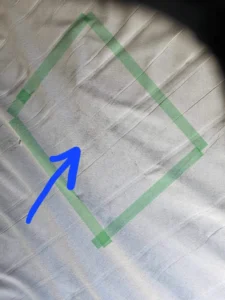
Dealing with customer complaints about the products you sell can be challenging, but it’s a critical part of running a business. Demands are especially high in the sale of mattresses, where customer satisfaction is closely tied to health and comfort. Handling such complaints effectively can prevent potential reputational damage and build customer trust and loyalty. Knowing how to handle situations where a customer claims a product is defective—for example, mold on a mattress—is essential. This article provides practical advice on how to verify such claims, communicate with the customer, and determine the appropriate solution. It also describes preventative measures to avoid similar incidents in the future. If you’re currently dealing with a product complaint or want to be prepared for one, this guide provides valuable insight.

Verify the claim First, you should verify the claim of mold. Politely ask the customer to send photos or have the mattress inspected. Mold can usually be identified visually and by a musty smell. It’s important to find out if the mold was present at the time of purchase or developed later due to environmental factors like moisture. Review return and refund policies Next, review your store’s return and refund policy. What does your policy say about returns for defects like mold? Knowing your own policies will help you handle this situation legally and efficiently. I sold my mattress to someone and they want a refund due to mold. Is this mold? : r/CleaningTips Consider the possibility of a manufacturing defect If your investigation indicates that the mattress was moldy at the time of purchase, it could be a manufacturing defect. If so, contact your supplier or manufacturer to report the issue and possibly get compensation or a replacement that you can then pass on to the customer. Communicate openly with the customer Communicate openly and honestly with the customer.

Explain the steps you are taking to investigate the issue and keep them updated on progress. Effective communication can prevent misunderstandings and ease the customer’s worries. Resolve the situation Resolve the situation based on your findings. If the mold was present at the time of purchase and your policy covers such defects, consider offering a refund or replacement. If the mold was caused by improper handling or environmental conditions, explain it carefully and offer tips to avoid similar problems in the future. Implement preventive measures Finally, implement preventive measures to avoid future complaints. Make sure your storage areas are dry and well-ventilated to prevent mold growth.

Regularly check the condition of products in your store and maintain clear communication with your suppliers about product quality standards. How to Get Rid of Mold On Your Mattress Dealing with a customer complaint about mold on a mattress sold requires good practice, clear communication, and a thorough understanding of your products and policies. By taking a systematic approach, you can resolve disputes amicably and maintain your company’s reputation for quality and service.





